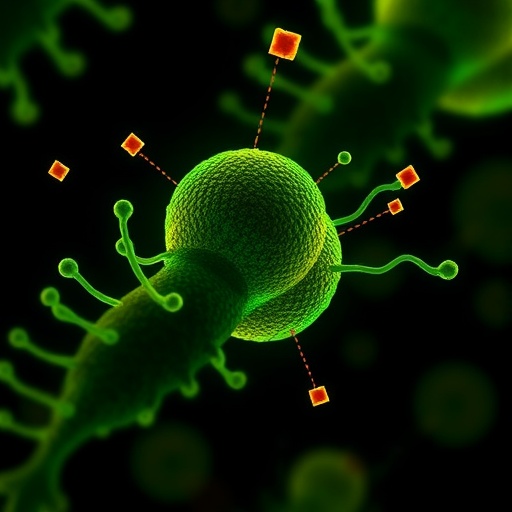In a groundbreaking study published in Nature Communications, a multinational team of researchers has unveiled new insights into the cellular complexity of the human pancreas, specifically dissecting the heterogeneity of α-cells and uncovering a pivotal gene linked to β-cell dedifferentiation. This discovery holds significant implications for our understanding of diabetes pathogenesis and the potential development of targeted therapies aimed at preserving or restoring insulin-producing β-cell function.
The study centers on the intricate cellular ecosystems found within the pancreatic islets of Langerhans, where multiple endocrine cell types coexist and interact to regulate blood glucose homeostasis. Among these, α-cells produce glucagon, a hormone that raises blood sugar levels, while β-cells secrete insulin, crucial for lowering glucose levels. Disruption or loss of β-cell identity and function is a hallmark of both type 1 and type 2 diabetes, but the molecular underpinnings driving this dedifferentiation have remained elusive until now.
By leveraging cutting-edge single-cell RNA sequencing technologies coupled with sophisticated trajectory inference algorithms, the researchers meticulously mapped the transcriptomic landscapes of human pancreatic α-cells across a range of physiological states. This approach allowed them to identify distinct subpopulations of α-cells exhibiting unique gene expression signatures, reflecting varying functional states and differentiation potentials within the islet microenvironment. Such cellular heterogeneity had been previously underappreciated and suggests more complex intra-islet regulatory dynamics than previously assumed.
A key revelation of the study is the identification of the gene SMOC1 (SPARC-related modular calcium binding 1) as a critical player in β-cell dedifferentiation processes. SMOC1, which encodes a matricellular protein involved in extracellular matrix interactions and cellular signaling, was discovered to be upregulated in α-cell subsets with trajectories indicative of transitioning toward a dedifferentiated β-cell phenotype. This finding challenges traditional views by implicating α-cell plasticity and specific gene regulators as contributors to β-cell identity loss, adding a new layer of complexity to islet biology.
Further experimental validation, including functional assays and in vitro β-cell models, demonstrated that aberrant SMOC1 expression correlates with diminished β-cell marker expression and impaired insulin secretion. These data strongly suggest that SMOC1 not only serves as a molecular marker for dedifferentiation but may actively drive the reprogramming of β-cells toward a less mature, dysfunctional state, thereby exacerbating diabetic pathology.
The authors also employed trajectory inference analyses, a computational method that reconstructs temporal cellular progression from single-cell data, to chart the potential lineage relationships and plasticity within the pancreatic islet cells. This revealed dynamic trajectories where α-cells could potentially adopt β-cell-like fates and vice versa, mediated by regulators such as SMOC1. Such plasticity points to novel regenerative avenues whereby modulating these pathways could restore functional β-cell populations.
Importantly, the identification of SMOC1 as a β-cell dedifferentiation gene opens promising therapeutic doors. Targeting this pathway could prevent or reverse the loss of β-cell identity, preserving insulin production capacity in diabetic patients. Given the limitations of current treatments in halting disease progression, interventions based on these molecular insights could revolutionize diabetes management.
Moreover, this research exemplifies the power of integrating high-resolution single-cell technologies with computational biology to uncover subtle yet critical cellular heterogeneities and transitions often masked in bulk tissue analyses. The study’s approach sets a new standard for dissecting cellular complexity within human tissues, particularly in contexts of disease where cell identity and function are compromised.
The findings also provoke a reevaluation of pancreatic cell plasticity, suggesting that therapeutic strategies might harness or control the inherent capacity of islet cells to transdifferentiate or dedifferentiate. This paradigm shift from viewing α- and β-cells as fixed identities toward dynamic states modulated by key genes like SMOC1 could inspire innovative regenerative treatments.
Furthermore, by elucidating the role of extracellular matrix components in β-cell dedifferentiation, the study connects tissue architecture and microenvironmental cues to cellular fate decisions. This cross-talk between extracellular signals and gene regulatory networks could inform biomaterial design for islet transplantation or engineering efforts aiming to create functional β-cells in vitro.
The collaboration involved in this study brought together expertise from endocrinology, genomics, bioinformatics, and molecular biology, underscoring the multidisciplinary nature required to tackle complex diseases like diabetes. Their integrative methodology harnessed the strengths of each discipline to produce a comprehensive picture of islet cell biology.
While the study focused on human pancreatic tissue, the researchers acknowledge the importance of extending findings to in vivo models and clinical samples from diabetic patients at various stages. Such work will be crucial to validate the translational potential of targeting SMOC1 and α-cell heterogeneity in therapeutic contexts.
In conclusion, this seminal research provides compelling evidence that human pancreatic α-cells are a heterogeneous population with distinct subtypes capable of influencing β-cell fate through genes like SMOC1. The discovery of this dedifferentiation gene not only advances basic scientific knowledge but also charts a path toward novel diabetes therapies aimed at maintaining or restoring β-cell identity and function. As diabetes continues to impose a global health burden, such pioneering insights offer hope for more effective interventions in the near future.
Subject of Research: Human pancreatic α-cell heterogeneity and β-cell dedifferentiation mechanisms
Article Title: Human pancreatic α-cell heterogeneity and trajectory inference analyses reveal SMOC1 as a β-cell dedifferentiation gene
Article References:
Kang, R.B., Varela, M., Oh, E. et al. Human pancreatic α-cell heterogeneity and trajectory inference analyses reveal SMOC1 as a β-cell dedifferentiation gene. Nat Commun 16, 8434 (2025). https://doi.org/10.1038/s41467-025-62670-5
Image Credits: AI Generated




